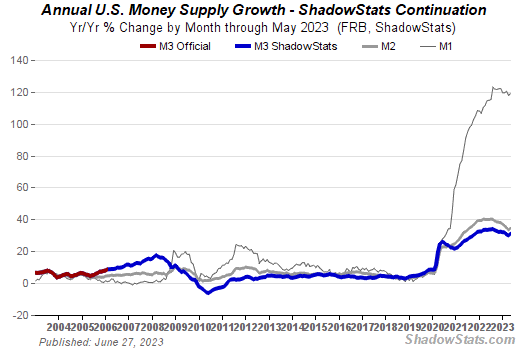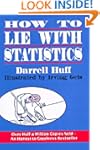quarta-feira, 31 de agosto de 2016
As origens da pobreza
Há não muito tempo Portugal e a Irlanda estavam juntos na cauda do pelotão europeu. Hoje a Irlanda é um dos países mais ricos da Europa, com um salário médio que é mais do triplo do português. Os m…
oinsurgente.org
Portugal's Anti-Austerity Effort Brings Little Growth
Portugal's economy is growing only half as quickly as the anti-austerity government had hoped, as its key policy of driving domestic demand comes up short. Portugal's economy grew at an annual rate of 0.9 percent in the second quarter, the national statistics agency said Wednesday. That is far short of the government's goal of 1.8 percent for 2016 and places the country among the eurozone's weakest economies. Though Portugal is one of the eurozone's smaller members, its finances are closely watched after it needed a 78 billion-euro ($87 billion) bailout in 2011 and deepened the bloc's financial crisis. The center-left Socialist government, with the support of the Communist Party and radical Left ...
Alemanha busca 100 000 engenheiros electrotécnicos
Neue Studie In 10 Jahren werden 100.000 Elektroingenieure fehlen
Wie groß in Deutschland die Ingenieurslücke zu werden droht, zeigt eine neue Studie: 100.000 zusätzliche Elektroingenieure sind wegen der Digitalisierung in den kommenden zehn Jahren nötig. Wo sollen die nur alle herkommen?
Ronald Coase
Published by EH.Net (August 2016)
Claude Ménard and Elodie Bertrand, editors, The Elgar Companion to Ronald H. Coase. Cheltenham, UK: Edward Elgar, 2016. xii + 368 pp. $210 (hardback), ISBN: 978-1-78254-798-3.
Reviewed for EH.Net by Rosolino A. Candela, Department of Economics, George Mason University.
As Ronald Coase stated in his Nobel Prize Address, “the main activity of economists, it seems to me, has been to fill the gaps in Adam Smith\’s system, to correct his errors, and to make his analysis vastly more exact” (1992: 713). Coase’s contributions, as highlighted by the excellent contributions put together in this volume, have drawn economists’ attention away from what Coase referred to as “blackboard economics” (1992: 714) and towards empirical observation of the “institutional structure” within which exchange and production take place. From his earliest work on the theory of the firm to his study of China’s transition to capitalism, The Elgar Companion to Ronald H. Coase emphasizes Coase’s particular attention to institutional detail in explaining exchange behavior in all of its diversity. Compiled in twenty-five chapters divided into five parts, editors Claude Ménard and Elodie Bertrand have gathered contributors to this volume ranging from Nobel Laureates in Economics, such as Kenneth Arrow and Oliver Williamson, to Coase’s intellectual biographer, Steve Medema, to Ning Wang, Coase’s co-author on his last book, How China Became Capitalist.
Much in the same way that Coase described the activity of economists, each chapter of this volume also fills particular gaps in Coase’s system, namely to contextualize and make more exact Coase’s contributions to the theory of the firm, the study of property rights, law and economics, and the economics of regulation. Each of these components to the New Institutional paradigm, as highlighted throughout this volume (particularly Parts IV and V), is united by Coase’s pioneering insight, namely that the role of the economist is to study a world of positive transactions costs and how such costs give rise to alternative institutional arrangements that structure contractual exchange and productive specialization.
Ronald Coase was a well-known member of the Chicago School of Economics. He first moved to the University of Chicago Law School in 1964, at which time he also began editorship of the Journal of Law and Economics, a post he held until his retirement in 1982 (p. 13). However, it is important to understand (as Mary Shirley and Jim Thomas explain in the first two chapters) that prior to moving to Chicago Coase’s intellectual roots were shaped at the London School of Economics (LSE) under Arnold Plant. Reading Frank Knight and Philip Wicksteed at the LSE (p. 23), as well as his lessons from Plant, impressed upon Coase (1) the coordinating role of the price system as a guide to exchange within a system of private property and (2) the tendency for governments to serve special interests and suppress market competition and innovation (p. 249). Coase’s empirical analysis of “the working of the economic system” (p. 276), for example as seen through his research into the British pork industry as analyzed by George Evans and Roger Guesnerie (chapter 5), is one in which prices are not sufficient statistics to “solve” an allocation problem; rather, prices act as guides in the formation of future expectations, facilitating greater plan coordination through exchange (see Boettke and Candela 2016). From his analysis of the firm to his critique of Pigovian welfare economics, Coase drew upon empirical observation of how human creativity crafts institutional solutions to “problems” that are institutional in nature, namely how firms mitigate the costs of organizing production, how property rights address environmental externalities, and how legal rules and contracts facilitate mutually beneficial exchange.
Although Coase was a leading defender of the market economy and a skeptic of government regulation, Coasean economics is not a public policy conclusion, as pointed out by Douglas Allen and Yoram Barzel (p. 71). Rather, this volume emphasizes that Coase understood economic theory as a methodological tool to explain historical facts, and that different theoretical assumptions, in explaining historical facts, have public policy implications. Whether Coase examined the provision of postal services, radio broadcasting, or lighthouses, his inquiry was always of a comparative institutional nature. From a Coasean standpoint, the question is whether the historical-institutional context under examination provides incentives to mitigate the costs of opportunistic behavior and of using the price system. For example, in establishing the conclusion that the provision of postal services, radio broadcasting, and lighthouses is not the sole prerogative of government, John Groenewegen and Piet de Vries (chapter 18) and Elodie Bertrand (chapter 23) show that Coase examined the empirical facts of particular cases to establish how market actors established property rights to exchange scarce resources, and how government actors would succumb to special interest group pressure and regulatory capture. The question for Coase was not whether the market or the government can allocate resources; it was a more subtle question about which alternative institutional arrangements can mitigate the costs of opportunism and use the price system, the answer to which yields a public policy conclusion.
Coase also understood that facts are theory-laden, and the purpose of theory in explaining facts is to understand the meaning and purposes attached to human agency. As illustrated by Richard Brooks (chapter 10), Coase’s critique of the Fisher Body “hold up problem” was not to refute that holdup may theoretically lead to vertical integration (p. 146, fn. 20); rather, it was to question whether the facts that were established in the Fisher Body-General Motors case actually showed an intent on the part of Fisher Body to holdup General Motors. To purge the intent of human agents by imposing them into theory renders theorizing unrealistic and therefore un-explanatory of real world facts.
Given the breadth and depth of Coasean political economy that is covered throughout this volume, The Elgar Companion will serve as a valuable input into the research of scholars currently working within the Coasean tradition, as well as appealing to researchers looking for a comprehensive introduction into the context, methodology, and foundational concepts of Ronald Coase’s scholarship.
References:
Peter J. Boettke and Rosolino A. Candela (2016), “Price Theory as Prophylactic against Popular Fallacies,” George Mason University Working Paper in Economics No. 16-05.http://papers.ssrn.com/sol3/papers.cfm?abstract_id=2710201##
Ronald H. Coase (1992), “The Institutional Structure of Production,” American Economic Review, vol. 82, no. 4: 713-19.
Rosolino Candela is a Ph.D. candidate in economics at George Mason University and a Graduate Research Fellow in the F.A. Hayek Program for Advanced Study in Philosophy, Politics, and Economics at the Mercatus Center at George Mason University. He has published several book chapters and journal articles in outlets including Advances in Austrian Economics, the Atlantic Economic Journal,Man and the Economy, the Journal of Private Enterprise, the Review of Austrian Economics, andSociologia. rcandela@gmu.edu
Copyright (c) 2016 by EH.Net.
terça-feira, 30 de agosto de 2016
O grande ciclo de crédito está acabando
The risk of a stock market crash is growing, according to UBS. The era of cheap debt and plentiful liquidity is slowly drawing to an end, according to a team of UBS analysts, led by Paul Winter, making it harder to use credit to juice corporate profits. As earnings fall, so will investors' confidence in stocks, leading to either a market crash or a correction, which is a slower and less violent drop in stock prices. UBS notes that "77% of stock crashes are driven by earnings announcements (Ak et al 2016)," and more companies are likely to disappoint the market in the future. Here's UBS (emphasis ours): "We believe we are witnessing the end of the credit cycle. Earnings growth rates are flat and ...
sábado, 27 de agosto de 2016
Constelações macroeconômicas
|
|
gMB
|
gmm
|
gV
|
gQc
|
gQn
|
π
|
Q, E
|
Y
|
|
PLG
|
0
|
0
|
0
|
+
|
+
|
-
|
+
|
0
|
|
MPI
|
+
|
+
|
0
|
0
|
0
|
+
|
0
|
+
|
|
MHI
|
+
|
+
|
+
|
-
|
-
|
+
|
-
|
+
|
|
MPD
|
-
|
-
|
-
|
-
|
0
|
-
|
-
|
-
|
|
DD
|
-
|
-
|
-
|
-
|
-
|
-
|
-
|
-
|
|
IS
|
0
|
0
|
0
|
-
|
-
|
+
|
-
|
-
|
|
IB
|
+
|
+
|
+
|
+
|
0
|
+
|
+
|
+
|
MPI: Monetary price inflation –
MHI: Monetary hyperinflation –
MPD: Monetary price deflation –
DD: Deflationary
depression –
IS: Inflationary stagnation (stagflation) –
IB – Inflationary boom
g: growth rate – MB: Mo
netary base –
mm: monetary multiplier –
V: velocity of circulation –
Qc: cyclical production –
Qn: natural production –
π: price inflation rate –
Q: Current output –
E: Employment
Y: nominal national income
Antony P. Mueller:
Beyond Keynes and the classics. Outline of the goods side/money side model
of the business cycle and macroeconomic configurations
Fonte
· Antony P. Mueller: Procesos de
mercado: revista europea de economía política, ISSN 1697-6797, Vol. 11, Nº. 2, 2014, págs. 111-135








